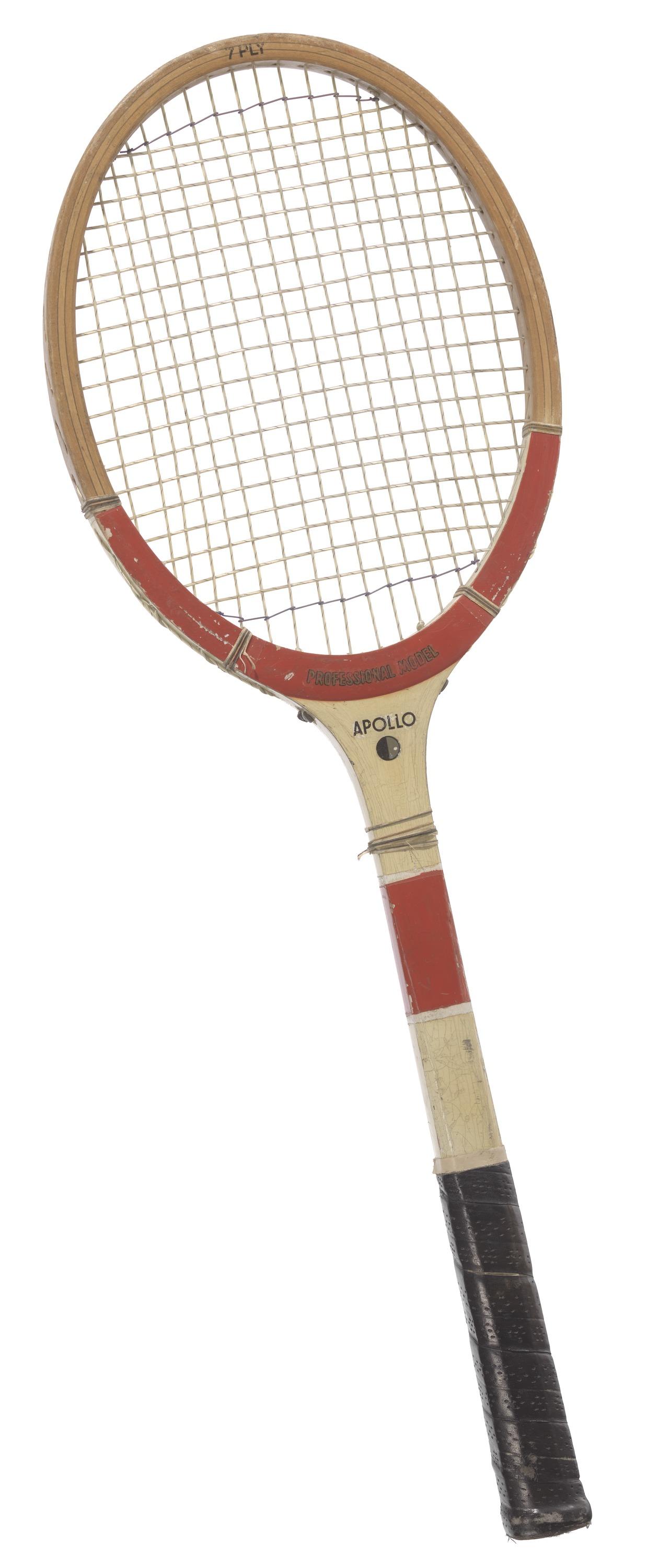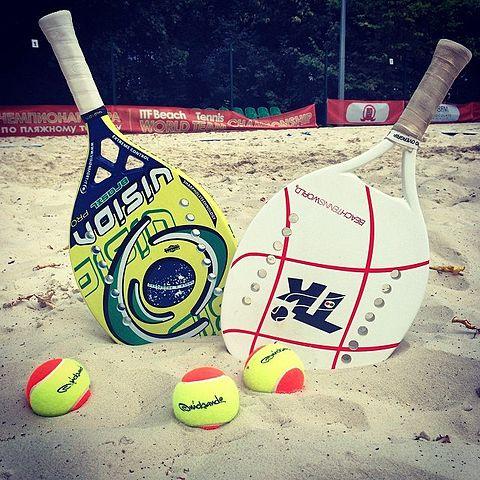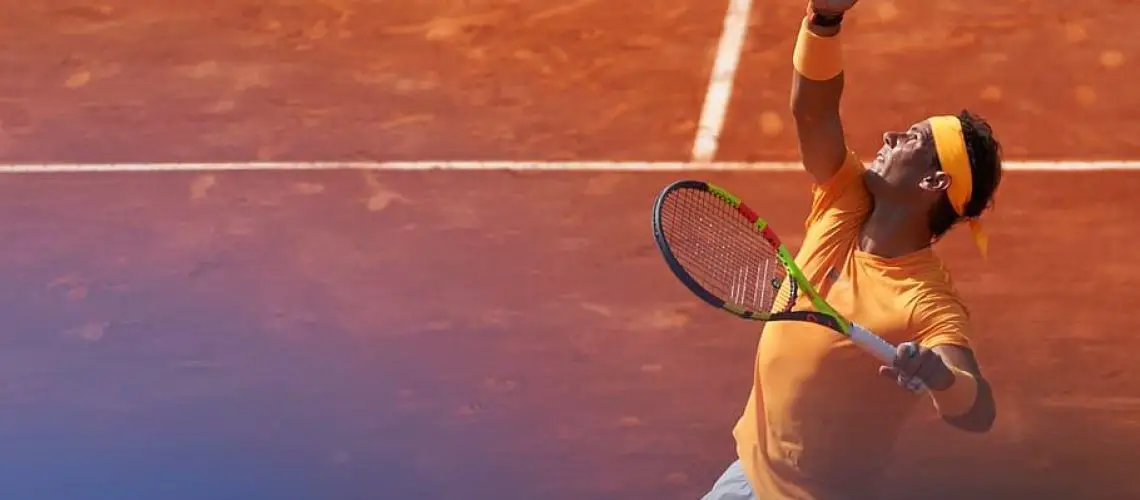We may earn money or products from the companies mentioned in this post.
Brief History of Tennis Rackets
Tennis rackets have come a long way since their humble beginnings In the early days, wooden rackets were the norm These rackets were heavy and had a small sweet spot, making it challenging for players to generate power and control their shots
However, as technology advanced, so did the materials used in racket construction The introduction of metal frames brought about a significant shift in the game Metal rackets provided players with more power and stability compared to their wooden counterparts
Evolution into Modern Materials and Designs

The evolution of tennis rackets continued with the introduction of composite materials such as graphite and carbon fiber These lightweight yet durable materials revolutionized the game by allowing players to generate even more power without sacrificing control
Modern tennis racket designs also incorporate innovative features like larger head sizes, wider beams, and advanced stringing patterns These advancements contribute to enhanced performance on the court, giving players an edge in terms of power, precision, and maneuverability
Importance of Racket Materials in Gameplay

The choice of racket materials plays a crucial role in a player’s overall performance on the court Different materials offer varying levels of power, control, and comfort
Power
Racket materials that provide excellent power transmission allow players to hit powerful shots effortlessly Lightweight yet sturdy composite materials like graphite or carbon fiber are known for maximizing power potential due to their ability to store energy during ball impact and release it effectively upon contact
Control
A well-balanced racket with optimal stiffness offers superior control over shots The right combination of racket material properties can help players achieve precise shot placement with minimal effort Advanced composites like graphene or kevlar provide the necessary control for players to execute accurate shots with ease
Comfort
Comfort is a crucial factor in racket selection, as it directly affects a player’s ability to play for long periods without experiencing discomfort or fatigue Racket materials that offer vibration damping properties, such as basalt or elastomer inserts, help reduce the impact shock and vibrations transmitted to the player’s arm, resulting in improved comfort during play
In conclusion, understanding the history of tennis rackets and the importance of racket materials in gameplay allows players to make informed choices when selecting their equipment With advancements in technology and innovative designs, modern rackets offer a perfect balance of power, control, and comfort to enhance a player’s performance on the court
Materials used in tennis racket construction

Frame materials
Tennis rackets come in various frame materials, each offering unique characteristics and performance benefits One of the oldest materials used for racket frames is wood While wooden rackets may not be as common today, they hold significant historical significance in the evolution of the sport However, wooden frames have certain disadvantages such as being heavier and less durable compared to modern alternatives
Another popular frame material is aluminum, which offers several advantages for beginner players Aluminum rackets tend to be lightweight, making them easier to maneuver on the court They also provide good power and control at an affordable price point, making them a popular choice for entry-level players
Metal alloys like titanium are also utilized in racket construction due to their advantageous properties These alloys offer a lightweight option that enhances maneuverability without compromising strength and durability However, metal alloy frames can sometimes be more expensive than other options
Graphite/composite frames have gained immense popularity among advanced players due to their enhanced performance features These frames combine graphite with other composite materials to create a balance between power and control They are known for their lightweight nature, providing players with improved maneuverability on the court
Strings materials
The strings play a crucial role in a tennis racket’s performance, influencing factors such as feel, power, spin potential, and durability Two main string materials commonly used are natural gut and synthetic gut
Natural gut strings offer a premium feel and playability that many professional players prefer Made from cow or sheep intestines, these strings provide excellent tension maintenance and superior touch on the ball However, they can be quite costly compared to synthetic alternatives and are less durable
Synthetic gut strings offer versatility and affordability, making them a popular choice for recreational and intermediate players They are typically made from materials like nylon, polyester, or multifilament constructions Synthetic gut strings provide good durability and a balance of power and control, catering to a wide range of playing styles
Grip materials
The grip material on a tennis racket is crucial for maintaining control and comfort during play Two common options for grip materials are leather and synthetic grips
Leather grips have been a classic choice in tennis due to their traditional look and feel They offer excellent moisture absorption, providing players with a secure grip even in sweaty conditions However, leather grips require more maintenance and can wear out faster compared to synthetic alternatives
Synthetic grips come in various options such as polyurethane (PU), rubber, or composite materials These grips offer different textures and patterns to enhance grip stability Synthetic grips are often more durable than leather grips while providing similar levels of comfort and control
Tennis Racket Technologies & Innovations

String Pattern Developments
In the world of tennis, string patterns have undergone significant developments to enhance player performance One innovation is the use of open string patterns These patterns, with wider spaces between strings, offer benefits such as increased spin generation Players can achieve more topspin and slice on their shots, adding a new level of versatility to their game However, open string patterns do come with drawbacks in terms of control and durability
On the other hand, dense string patterns have also gained popularity among players seeking greater control and touch on the ball With tightly packed strings, these patterns provide excellent precision and responsiveness However, one trade-off is that there is less potential for generating spin compared to open string patterns
Frame Engineering Advancements
Racket manufacturers have also made strides in frame engineering to optimize player performance on the court Aerodynamic head shapes are one such advancement that has revolutionized racket design By reducing air resistance during swings, these streamlined heads allow players to generate higher racket speed and unleash more powerful shots Additionally, they enhance maneuverability around the court for quicker reactions
Variable beam thickness is another notable innovation in frame engineering This technology involves altering the thickness of different parts of the racket’s frame to achieve a balance between power and control Thicker beams provide more power while thinner beams enhance control over shots However, it’s important to note that changes in beam thickness can also affect the racket’s stiffness
Vibration Dampening Technologies
To improve player comfort and reduce potential injuries caused by vibrations from ball impacts, vibration dampening technologies have been developed Shock absorption systems play a crucial role in minimizing impact forces transmitted through the racket into a player’s arm or wrist This reduces the risk of discomfort or injury, allowing players to focus on their game with improved confidence
Furthermore, these technologies offer enhanced comfort during intense rallies and longer matches By absorbing and dispersing vibrations, players experience less fatigue in their arm muscles, enabling them to perform at their best for longer periods on the court
Choosing the Right Tennis Racket Material

When it comes to choosing a tennis racket, there are several factors to consider These factors will ensure that you find the perfect racket that suits your playing style and preferences Let’s take a closer look at what you should keep in mind
Skill Level and Playing Style
The first factor to consider is your skill level and playing style Are you a beginner or an intermediate player? Or perhaps you’re an advanced player who competes at a competitive level The material of the racket can greatly impact your performance on the court
If you’re a beginner or intermediate player, you may want to opt for a racket made from materials such as aluminum or graphite composite These materials offer a good balance of power and control, making it easier for players to develop their skills
On the other hand, if you’re an advanced or competitive player, you might prefer rackets made from more advanced materials like carbon fiber or graphene These materials provide enhanced power and maneuverability, allowing experienced players to maximize their performance on the court
Personal Preferences
In addition to skill level and playing style, personal preferences also play a crucial role in choosing the right tennis racket material Factors such as weight, balance, and grip size can significantly affect how comfortable and effective the racket feels in your hands
The weight of the racket can impact your swing speed and overall control A lighter racket is generally easier to maneuver but may sacrifice some power On the other hand, a heavier racket can generate more power but may require more strength to handle effectively
The balance of the racket refers to its distribution of weight between the head and handle A balanced racket offers stability and versatility, while head-heavy rackets provide extra power for aggressive shots, and handle-heavy rackets offer better maneuverability for quick reactions
Grip size is another important consideration Having the right grip size ensures a comfortable and secure hold on the racket, preventing unnecessary strain or discomfort during play
Importance of Demoing Rackets
To truly determine which tennis racket material suits you best, it’s essential to demo rackets before making a final decision This involves trying out multiple options and evaluating their performance in real game situations
Demoing rackets allows you to compare different materials firsthand and understand how they affect your gameplay You can assess factors such as power, control, stability, and feel while hitting various types of shots on the court
Consulting with professionals is also highly recommended when demoing rackets Coaches or local pro shop experts can provide valuable insights based on their experience and knowledge Additionally, online resources and reviews can offer a wealth of information from other players who have tested different racket materials
By taking the time to demo rackets and seeking expert advice, you’ll be equipped with the necessary information to make an informed decision about choosing the right tennis racket material that perfectly suits your needs
Useful Links

What Are Tennis Racquets Made Of?
What material is professional tennis racket frames made …
What Are Tennis Racquets Made of?
What Were Old Tennis Rackets Made Of?
HISTORY OF RACKETS AND STRINGS
How Tennis Rackets Are Manufactured
How Are Tennis Racquets Made?
The Tennis Racket: A Brief History
What Are Tennis Rackets Made Of? (Full Explanation)
(PDF) Materials and tennis rackets
Evolution of Tennis Rackets
The Evolution of the Tennis Racquet – by Ronen Ainbinder
What are tennis rackets made of?
Australian Open 2020: How racket design made tennis faster
String theory: the evolution of the tennis racket
Are Tennis Racket Strings Made Of Cat Guts?
The Emergence of Graphite
The History of Tennis Racquets
The difference between a cheap and an expensive tennis …






